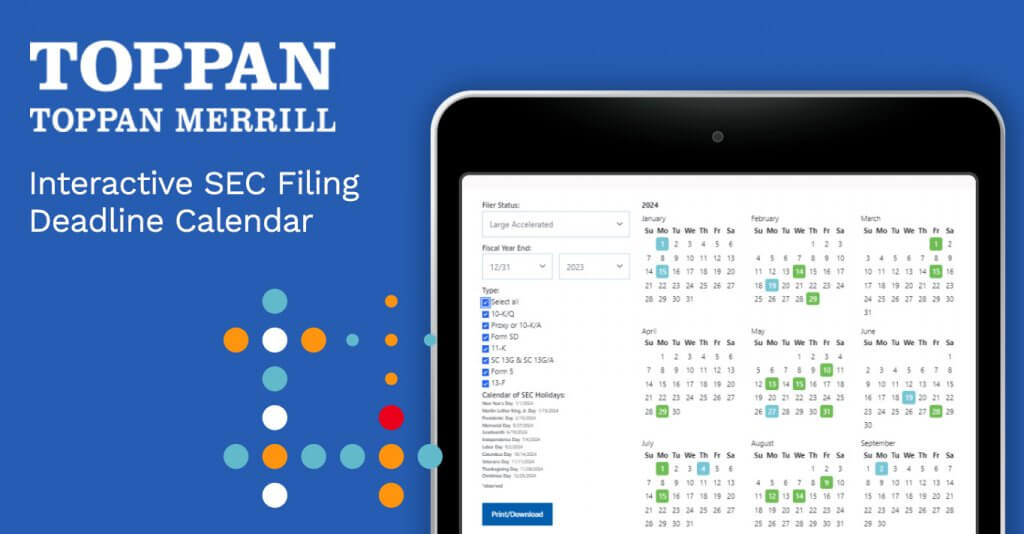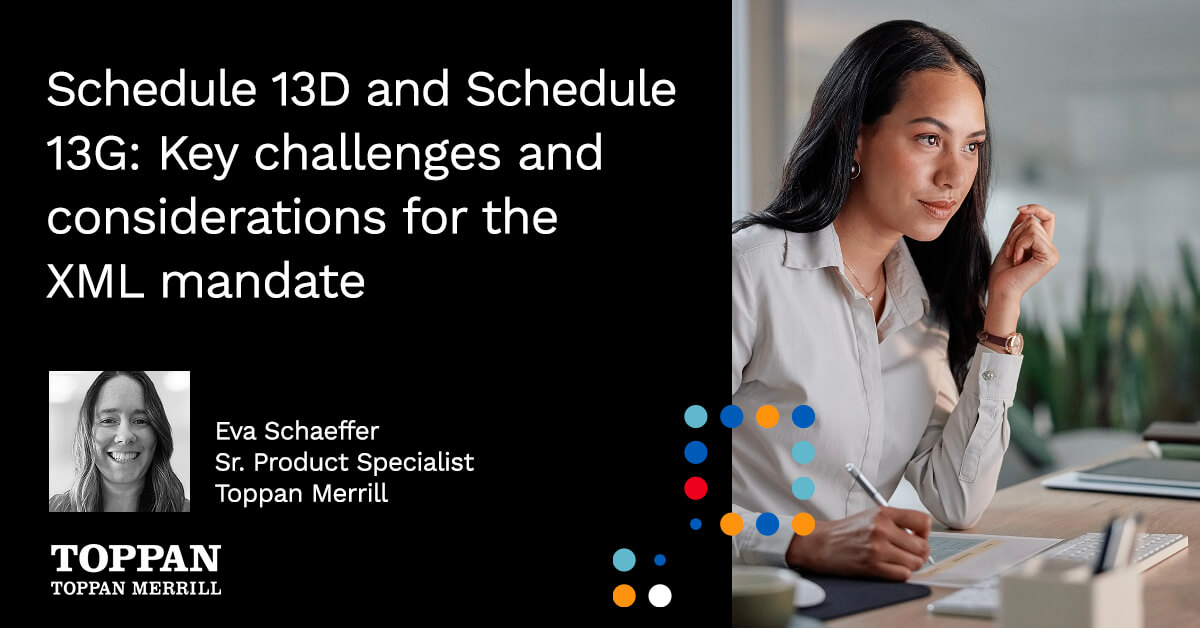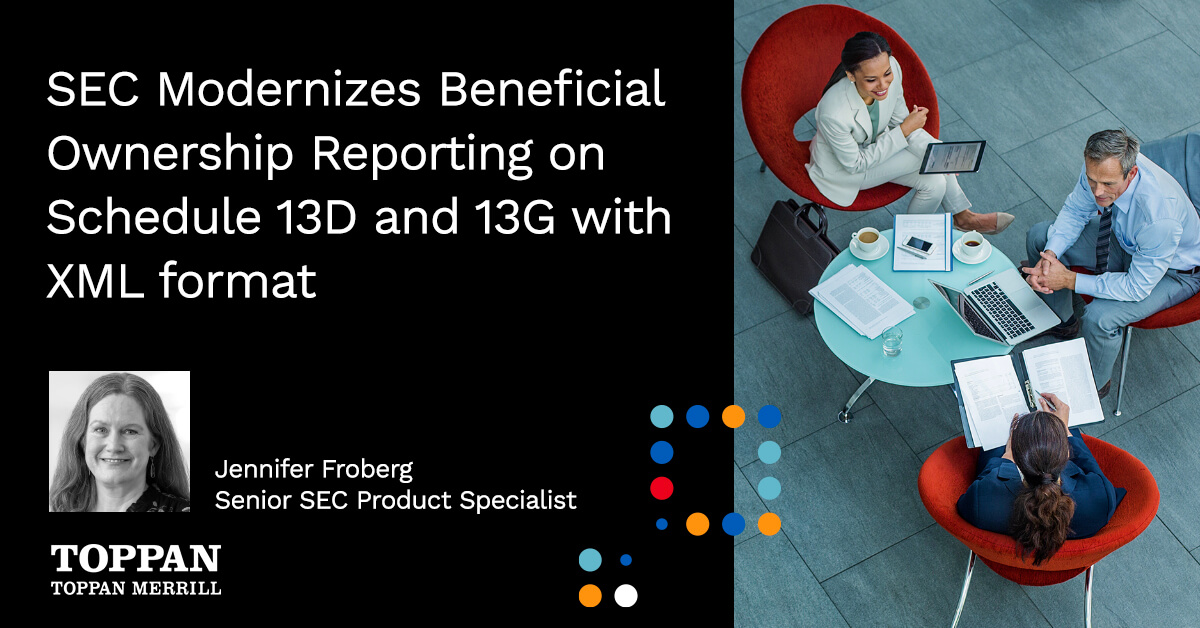
Section 16 Filings (Insider Transactions):
Form 3: Initial Statement of Beneficial Ownership. Filed when an individual becomes an officer, director, or beneficial owner of over 10% of a company’s equity securities.
Form 4: Statement of Changes in Beneficial Ownership. Filed to report changes in the ownership interests of company insiders.
Form 5: Annual Statement of Beneficial Ownership. Filed annually to report any transactions missed during the fiscal year.
Schedule 13D and Schedule 13G Filings:
Schedule 13D: Filed by anyone acquiring more than 5% of a company’s equity securities, detailing the purpose of the transaction and any plans for the company. Activist investors typically use this form, though some may qualify to file the shorter Schedule 13G.
Schedule 13G: A simplified version of Schedule 13D, used by passive investors who acquire over 5% of a company without intending to influence or change control.
Forms D, 13F and 144:
Form D: Filed by companies and funds selling securities without registering under the Securities Act of 1933, relying on exemptions in Regulation D or Section 4(a)(5). It helps ensure transparency and reduce fraud.
Form 13F: A quarterly report filed by institutional managers with over $100 million in equity assets, detailing investment holdings, including issuer names, security types, and market values. It enhances transparency into investment strategies.
Form 144: Required for individuals selling restricted or control securities. This filing notifies the SEC and the public about these sales, ensuring proper disclosure.

SEC Connect
Easily manage a variety of form types in one web-based platform, including Section 16 (Forms 3, 4, and 5), Schedule 13D and 13G, Form 13F, Form D, Form 144 and more.
- Keep track and in control of the information and easily manage Section 16 filer information
- Full setup, onboarding and support
- Service supported with over 50 years of industry expertise
Forms 3, 4, and 5
Schedule 13D & 13G
Form D, 13F & 144
- Lean into Toppan Merrill’s suite of SEC reporting tools to streamline the disclosure content management and submission process
- Access SEC reporting experts 24/7 to proactively guide your team through the required filings, deadlines and keep you in compliance
- Receive continual insights on industry updates and new regulatory requirements through webinars, events, blogs and articles
Solutions you can count on.

Interactive SEC Filing Deadline Calendar
Designed exclusively for public corporations and investment management companies. Simply enter your filer status, FYE and form types to view key filing dates.
Access the calendar
Updates and Insights

Schedule 13D and Schedule 13G: Key challenges and considerations for the XML mandate

SEC Modernizes Beneficial Ownership Reporting on Schedule 13D and 13G with XML format

SEC Announces Charges Against Public Companies and Insiders in Connection with “Ongoing” Investigation of Beneficial Ownership Reporting Violations
Related Solutions
SEC Connect
Annual Meeting & Proxy Solutions
Contact our team to get started.
Phone
Have more questions?
Reduce complexity and get answers to some of our customers’ frequently asked questions.
See the full list of FAQsSEC Section 16 of The Securities Exchange Act of 1934 requires corporate insiders to publicly disclose their company affiliations, material changes in their holdings or unreported insider transactions through various regulatory filings with the SEC. Specifically, Section 16 mandates that Forms 3, 4 and 5 be filed by insiders—in other words, company investors who are directly or indirectly beneficial owners of more than 10% of stock in a company or directors and officers of the issuer of the securities. An insider of a first-time securities issuer or a new insider at an already-registered securities issuer must carry out the initial filing, Form 3. Form 4 is used to report material changes in insiders’ holdings. Form 5 reports any transactions that should have been included on a previous Form 4 or were eligible for deferred reporting such as gifts of shares or multiple small transactions. Section 16 reporting must be submitted electronically through the EDGAR computer system for the receipt, acceptance, review and dissemination of documents submitted in electronic format to the Commission. The SEC also requires companies to post the forms on their websites by the end of the next business day after filing them. Section 16 reporting deadlines were accelerated due to provisions of the SOX, the Sarbanes-Oxley Act of 2002. For support and additional information, explore our solutions here.
SEC Schedule 13D must be filed when an entity acquires more than 5% of any class of publicly traded securities in a public company. In accordance to Rule 13D, this particular SEC filing of an initial beneficial ownership must be submitted within 10 days of the transaction. Schedule 13D is intended to increase transparency around who the large shareholders are in a public company and why they have a stake in it. When a Schedule 13D is filed, it may disclose to the public that a hostile takeover, proxy battle or other “change of control” may soon take place. Schedule 13D is made up of seven sections ranging from basic information on the security type and class, as well as the contact information for the owner, to exhibits such as letters to management signaling a hostile takeover. Schedule 13D, which is often submitted with a tender offer, must be filed electronically via the SEC’s EDGAR computer system for the receipt, acceptance, review and dissemination of documents submitted in electronic format to the Commission. For support and additional information, explore the our solutions here.
SEC Schedule 13G, a simpler, short-form version of Schedule 13D, can be used to disclose the beneficial ownership of a company in lieu of Schedule 13D as long as certain conditions are met by three categories of owners: a qualified institutional investor in accordance with Rule 12d-1(b), a passive investor based on Rule 13d01(c), and an exempt investor laid out in Rule 13d-1(d).
Qualified institutional investors must file Schedule 13G within 45 days of the end of the calendar year in which they acquired more than 5% of a company. If they acquired more than 10%, then they must file within 10 days of the end of the calendar month in which the acquisition was made. Qualified investors are only eligible if they acquired the securities in the ordinary course of business, without changing or intending to exert control over the issuer. And they must be a regulated entity such as a registered investment adviser or company.
Passive investors must file Schedule 13G within 10 days of a transaction that amounts to more than 5% but less than 20% ownership of a company. They are also only eligible if they do not change or influence control of the issuer.
Meanwhile, exempt investors should file Schedule 13G within 45 days of the end of the calendar year in which they acquired more than 5% of a company. One type of exempt investor is an entity that’s acquired beneficial ownership of over 5% of a class of equity securities that weren’t registered when the acquisition took place but were registered subsequently.
Schedule 13G must be filed electronically via the EDGAR computer system for the receipt, acceptance, review and dissemination of documents submitted in electronic format to the SEC. For support and additional information, explore our SEC reporting solutions.
SEC Form 144 is a mandatory filing for individuals or entities intending to sell restricted or control securities that exceed 5,000 shares or $50,000 in total sales price within a three-month period. Restricted securities typically arise from private sales, while control securities belong to affiliates such as directors or major shareholders. The purpose of this filing is to notify the SEC and the public about these transactions.
Form 144 must be electronically filed with the SEC via its EDGAR system in XML format. Previously, it was allowed to be filed on paper or by email. Securities must be held for at least six consecutive months before they can be sold, though this holding period may include the initial purchase date for any gifted securities.
If the sales of restricted or control securities exceed 5,000 shares or a total sale price of more than $50,000 within a three-month period, an additional Form 144 must be filed for further sales. Filers are also limited to selling no more than 1% of the total number of outstanding securities during this period.
For support and additional information, explore our SEC reporting solutions.
Institutional investment managers having equity assets under management of $100 million or more must use SEC Form 13F, pursuant to Section 13(f) of the Securities Exchange Act of 1934, to disclose information about themselves as well as their recent investment holdings. Also known as the Information Required of Institutional Investment Managers Form, this report must be filed with the SEC within 45 days of the end of each quarter.
An entity that invests in, or buys and sells, securities for its own account as well as a natural person or an entity that exercises investment discretion over the account of any other natural person or entity constitutes an institutional investment manager. Registered Investment Advisers (RIAs), insurance companies, pension funds, hedge funds, mutual funds, banks and trust companies are all types of institutional investment managers.
Form 13F must include the issuer name of all Section 13(f) securities as well as the class of security listed, number of shares owned and the fair market value of the securities listed as of the end of the calendar quarter during which the report is filed. Section 13(f) securities may include equity securities that trade on an exchange (e.g., NYSE, AMEX, NASDAQ), shares of closed-end investment companies, shares of exchange-traded funds (ETFs) and certain convertible debt securities.
SEC Form 13F contains two parts, Form 13F and Information Table, that must be filed in XML. These filings provide key data points by which to gauge investment management exposures, performance attribution and associated risks. These filings are filed on the EDGAR computer system for the receipt, acceptance, review and dissemination of documents submitted in electronic format to the SEC, and subsequently made public on the SEC’s website. For support and additional information, explore our SEC reporting solutions.
SEC Form D, also known as Reg Dex or Reg D, is required for companies and funds offering and selling securities without registration under the Securities Act of 1933 in reliance on an exemption provided in Regulation D or Section 4(a)(5). The form must be filed within 15 days after the first sale of securities.
Form D comprises brief information about the company, its executive officers and stock promoters, the amount and value of the securities sold and the date of first sale. The form is intended to prevent fraud in the sale of the offered securities by requiring significant information on those securities be made easily accessible to investors.
A number of Form D filings are made by startups raising capital through venture capital and angel investors as well as certain pooled investment funds.
Form D is filed in XML format and must be filed using the SEC’s EDGAR (Electronic Data Gathering, Analysis, and Retrieval) computer system for the receipt, acceptance, review and dissemination of documents submitted in electronic format to the Commission. For support and additional information, explore our Section 16 Filing Solutions.